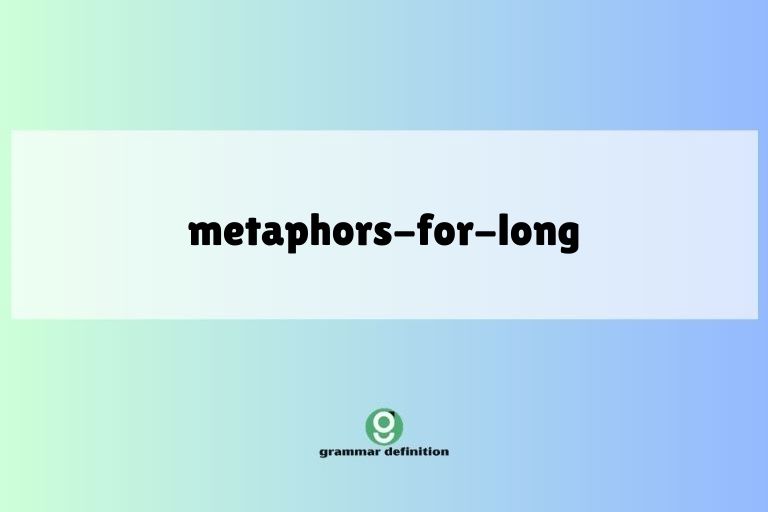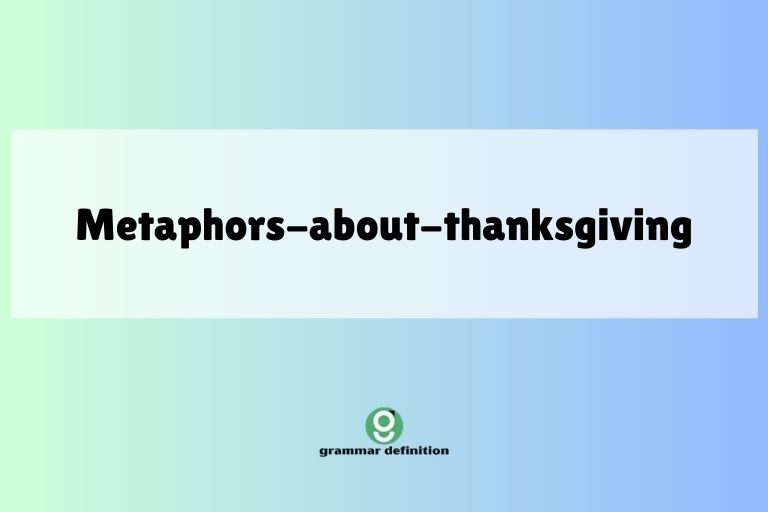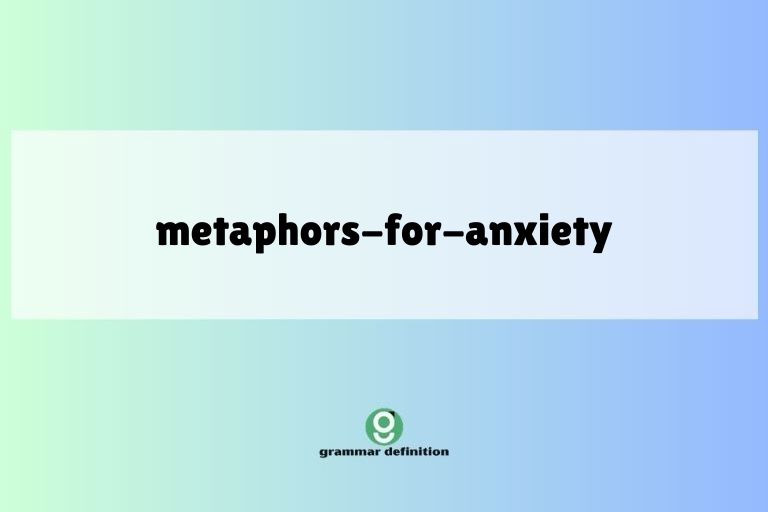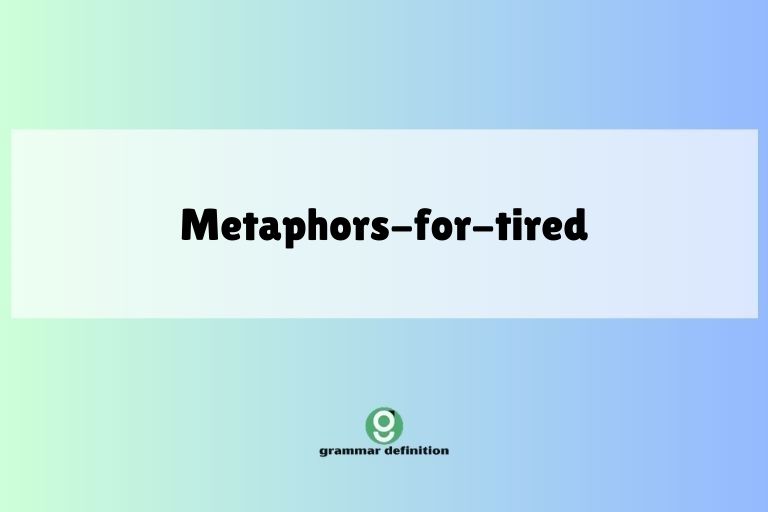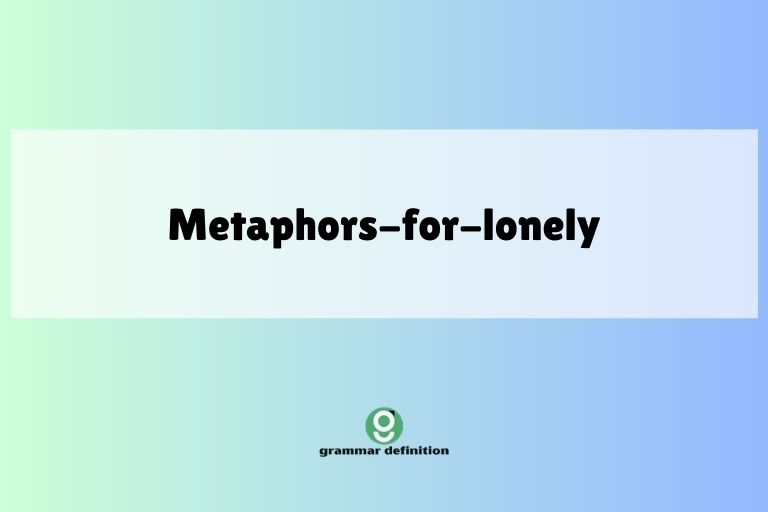Metaphors for Power: Understanding Figurative Language
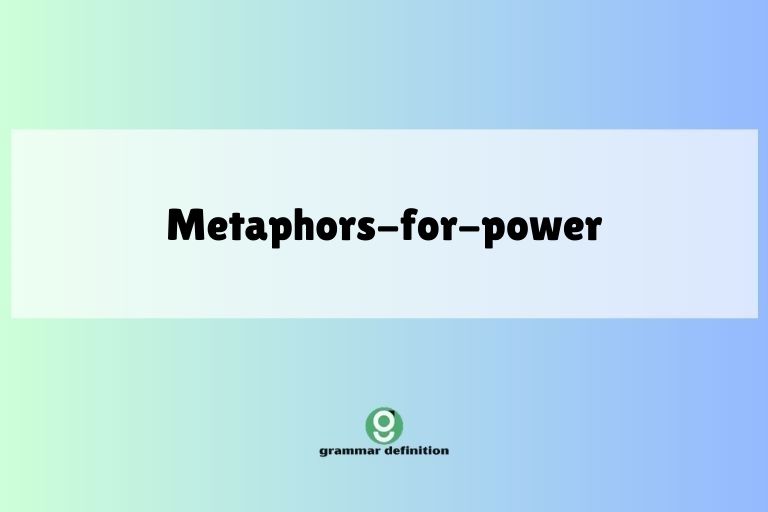
Metaphors are powerful tools in language, allowing us to understand abstract concepts by relating them to more concrete ideas. When discussing power, metaphors are especially useful.
They help us grasp the dynamics, effects, and nuances of power in various contexts. This article explores the common metaphors used to describe power, providing a comprehensive guide for English language learners to enhance their understanding and usage of figurative language.
This guide is beneficial for students, writers, and anyone interested in improving their communication skills. By examining these metaphors, you’ll gain a deeper understanding of how power is perceived and discussed, enabling you to express your ideas more effectively and interpret the language of others with greater precision.
Table of Contents
- Introduction
- Definition of Metaphor for Power
- Structural Breakdown of Metaphors
- Types and Categories of Power Metaphors
- Examples of Metaphors for Power
- Usage Rules for Power Metaphors
- Common Mistakes When Using Power Metaphors
- Practice Exercises
- Advanced Topics: Extended Metaphors and Symbolism
- Frequently Asked Questions
- Conclusion
Definition of Metaphor for Power
A metaphor for power is a figure of speech that uses an image, object, or concept to represent power in a non-literal way. Instead of directly stating what power is, a metaphor suggests what power is like. These metaphors function by transferring qualities from a familiar concept to the abstract concept of power, making it more understandable and relatable.
Metaphors for power are crucial in political discourse, literature, and everyday language. They shape our understanding of authority, influence, and control.
By using metaphors, speakers and writers can evoke emotional responses, emphasize specific aspects of power, and persuade their audience more effectively.
For instance, describing a powerful leader as the “lion of the senate” doesn’t mean the leader is literally a lion. Instead, it uses the lion’s association with strength, courage, and dominance to highlight the leader’s powerful qualities.
Understanding these metaphors enhances our ability to interpret and analyze communication in various contexts.
Structural Breakdown of Metaphors
Metaphors generally consist of two main elements: the tenor and the vehicle. The tenor is the subject being described (in this case, power), and the vehicle is the image or concept used to represent the subject. The vehicle transfers its attributes to the tenor, creating a new understanding.
Consider the metaphor “Power is a game.” Here, “power” is the tenor, and “game” is the vehicle. The characteristics of a game, such as strategy, competition, and winners/losers, are attributed to power, suggesting that power dynamics involve strategic maneuvering and competition.
Effective metaphors rely on shared cultural understandings and associations. The more familiar the vehicle is to the audience, the more effectively the metaphor communicates the intended meaning.
The link between the tenor and vehicle isn’t always obvious and requires some interpretation based on context and cultural knowledge.
Types and Categories of Power Metaphors
Metaphors for power can be categorized based on the specific images or concepts they employ. Each category highlights different aspects of power, providing a nuanced understanding of its multifaceted nature.
Power as a Force
This category uses metaphors relating power to natural or physical forces, such as wind, waves, or electricity. These metaphors emphasize the immense, often uncontrollable, nature of power.
Examples include: “The force of his personality was overwhelming,” or “Her influence surged through the organization like a tidal wave.” These metaphors convey the idea that power can be a potent and unstoppable force.
Power as a Resource
These metaphors depict power as something that can be accumulated, distributed, and consumed, similar to money, oil, or water. This highlights the economic and strategic aspects of power.
Examples: “He hoarded power within his department,” or “They sought to redistribute power more equitably.” These metaphors suggest that power is a valuable commodity that can be managed and controlled.
Power as a Game
This category compares power dynamics to a game, emphasizing strategy, competition, and the pursuit of victory. This highlights the strategic and competitive aspects of power.
Examples: “Politics is a chess game,” or “She played her cards carefully to gain influence.” These metaphors suggest that power involves strategic maneuvering, calculated risks, and the potential for both winning and losing.
Power as a Burden
These metaphors portray power as a heavy weight or responsibility, highlighting the stress and challenges associated with wielding authority.
Examples: “The weight of leadership was crushing him,” or “She carried the burden of responsibility with grace.” These metaphors suggest that power can be a source of stress, pressure, and sacrifice.
Power as Height
This category uses height as a metaphor for power, suggesting that those in positions of authority are elevated above others. This emphasizes the hierarchical nature of power.
Examples: “He ascended to the pinnacle of power,” or “She looked down on her subordinates.” These metaphors convey the idea that power involves a position of superiority and control.
Power as a Weapon
These metaphors depict power as a tool for offense or defense, highlighting its potential for harm and protection.
Examples: “He wielded his influence like a sword,” or “Knowledge is a powerful weapon.” These metaphors suggest that power can be used to protect oneself or to inflict harm on others.
Power as Control
This category uses metaphors relating power to the ability to manage and direct resources, people, or events.
Examples: “She had a firm grip on the company,” or “He orchestrated the entire operation.” These metaphors emphasize the managerial and organizational aspects of power.
Examples of Metaphors for Power
The following tables provide numerous examples of power metaphors, categorized by the types discussed above. These examples illustrate the diverse ways in which power can be represented figuratively.
The table below presents examples of “Power as a Force,” showcasing how power can be likened to natural or physical forces.
| Metaphor | Explanation |
|---|---|
| His anger was a tidal wave. | The intensity and destructiveness of his anger are compared to a large, powerful wave. |
| Her influence surged through the company. | Her impact on the company is likened to a rapidly increasing and powerful force. |
| The politician’s charisma was magnetic. | The politician’s ability to attract and influence people is compared to the force of a magnet. |
| Their movement gained momentum. | The growing strength and influence of the movement are likened to an object gaining speed and force. |
| The CEO’s decision sent shockwaves through the industry. | The far-reaching and disruptive effects of the CEO’s decision are compared to the impact of a shockwave. |
| His words carried the weight of authority. | The impact and significance of his words are emphasized by comparing them to a heavy load. |
| The government’s policies created a ripple effect. | The cascading and widespread consequences of the policies are compared to the ripples created by a stone thrown into water. |
| The scandal erupted like a volcano. | The sudden and explosive revelation of the scandal is compared to a volcanic eruption. |
| Her determination was an unstoppable current. | Her unwavering resolve and drive are compared to a powerful and continuous flow of water. |
| The pressure mounted on the dictator. | The increasing stress and challenges faced by the dictator are likened to a growing force. |
| The company’s growth was explosive. | The rapid and significant expansion of the company is compared to an explosion. |
| His leadership was a guiding light. | His ability to provide direction and inspiration is compared to a source of illumination. |
| The revolution swept across the nation. | The widespread and transformative impact of the revolution is compared to a sweeping force. |
| Her speech ignited the crowd. | Her words sparked enthusiasm and passion in the audience, similar to how a flame ignites fuel. |
| The project gathered steam as it progressed. | The increasing progress and energy behind the project are compared to a steam engine building power. |
| His influence permeated every level of the organization. | His power and impact spread throughout all parts of the organization. |
| The reform movement gained traction. | The increasing support and progress of the reform movement are likened to a vehicle gaining grip on a surface. |
| The news hit them like a thunderbolt. | The sudden and shocking impact of the news is compared to a bolt of lightning. |
| Their support for the cause was unwavering. | Their commitment and dedication to the cause remained firm and constant. |
| The company’s success was a whirlwind. | The rapid and overwhelming success of the company is compared to a powerful, swirling wind. |
| The argument escalated into a storm. | The increasing intensity and conflict of the argument are compared to a severe weather event. |
| His ideas sparked a firestorm of debate. | His ideas triggered a heated and widespread discussion, similar to an intense and uncontrolled fire. |
| Her presence commanded attention. | Her strong and imposing presence naturally attracted and held people’s focus. |
The following table presents examples of “Power as a Resource,” illustrating how power can be seen as something to be acquired, managed, and distributed.
| Metaphor | Explanation |
|---|---|
| He hoarded power within his department. | He kept control of authority and influence, not sharing it with others. |
| They sought to redistribute power more equitably. | They aimed to divide authority and influence more fairly among people. |
| The company invested heavily in its employees. | The company allocated significant resources to develop and empower its employees. |
| She carefully rationed her energy. | She conserved and managed her energy resources efficiently. |
| The politician capitalized on the scandal. | The politician used the scandal to gain an advantage and increase their power. |
| He leveraged his connections to get ahead. | He used his relationships and network to gain an advantage and advance his career. |
| The organization tapped into a new source of funding. | The organization accessed and utilized a new source of financial support. |
| She carefully cultivated her image. | She worked diligently to develop and enhance her public perception. |
| The leader depleted his political capital. | The leader exhausted his reserves of influence and support. |
| The company mined data for insights. | The company extracted valuable information from data to gain knowledge and understanding. |
| He carefully budgeted his time. | He allocated and managed his time resources efficiently. |
| The campaign poured money into advertising. | The campaign invested heavily in advertising to promote their message. |
| She amassed a considerable fortune. | She accumulated a large amount of wealth. |
| The government allocated funds to education. | The government distributed financial resources to support education. |
| He conserved his resources for the final push. | He saved and preserved his resources for the final effort. |
| The company diversified its investments. | The company spread its financial resources across various assets. |
| She nurtured her relationships with key clients. | She fostered and developed her relationships with important clients. |
| The organization hoarded its intellectual property. | The organization protected and kept exclusive control of its valuable ideas and innovations. |
| He invested his time in learning new skills. | He dedicated his time to acquiring new abilities and knowledge. |
| The country exploited its natural resources. | The country utilized its natural resources for economic gain. |
| She watered the seeds of change. | She nurtured and supported the growth of new ideas and initiatives. |
| He harvested the rewards of his hard work. | He reaped the benefits and successes resulting from his diligent efforts. |
| The company accumulated a wealth of knowledge. | The company gathered a large amount of expertise and information. |
The table below provides examples of “Power as a Game,” highlighting the strategic and competitive elements of power dynamics.
| Metaphor | Explanation |
|---|---|
| Politics is a chess game. | Political maneuvering is compared to the strategic thinking required in chess. |
| She played her cards carefully to gain influence. | She acted strategically to increase her power and control. |
| He outmaneuvered his opponents. | He used clever tactics to gain an advantage over his rivals. |
| The company made a strategic move. | The company took a deliberate action to achieve a specific goal. |
| She checkmated her rival. | She defeated her opponent completely. |
| He was a pawn in their game. | He was manipulated and used by others for their own purposes. |
| The negotiation was a high-stakes poker game. | The negotiation involved significant risks and rewards. |
| She had a trump card to play. | She had a powerful advantage that she could use to win. |
| He lost the game of politics. | He was defeated in the political arena. |
| The company changed its strategy mid-game. | The company adjusted its plan of action during the process. |
| He moved the goalposts. | He changed the rules or objectives to make it more difficult for others to succeed. |
| She gained a competitive edge. | She obtained an advantage over her rivals. |
| He was playing a dangerous game. | He was taking significant risks with potentially harmful consequences. |
| The company raised the stakes. | The company increased the level of risk and potential reward. |
| She made a calculated risk. | She took a chance after carefully considering the potential outcomes. |
| He had to navigate a minefield of political issues. | He had to carefully maneuver through a complex and dangerous situation. |
| The team scored a major victory. | The team achieved a significant success. |
| She was a master strategist. | She was highly skilled at planning and executing tactics to achieve her goals. |
| He had to play his cards close to his chest. | He had to keep his plans and intentions secret. |
| The company made a power play. | The company took a bold action to assert its dominance. |
| He was caught in a political trap. | He was deceived or manipulated into a disadvantageous position. |
| She held all the aces. | She had all the advantages and resources needed to succeed. |
| The game was rigged. | The rules were unfairly manipulated to favor one side. |
The following table presents examples of “Power as a Burden,” highlighting the challenges and responsibilities associated with wielding power.
| Metaphor | Explanation |
|---|---|
| The weight of leadership was crushing him. | The responsibilities and pressures of leadership were overwhelming him. |
| She carried the burden of responsibility with grace. | She handled her duties and obligations with poise and composure. |
| The crown weighs heavily on his head. | The pressures and responsibilities of being a monarch are burdensome. |
| He shouldered the blame for the company’s failure. | He accepted responsibility for the company’s unsuccessful outcome. |
| The task was a heavy load to bear. | The assignment was difficult and demanding to handle. |
| She felt the weight of expectation. | She experienced pressure to meet high standards and expectations. |
| The responsibility was a millstone around his neck. | The obligation was a heavy and constant burden. |
| He carried the world on his shoulders. | He felt responsible for solving all the problems and issues. |
| The stress was a constant drain on her energy. | The pressure continuously depleted her strength and vitality. |
| She struggled under the yoke of tradition. | She found it difficult to conform to the constraints of traditional practices. |
| He was burdened by the secrets he kept. | He was weighed down by the responsibility of keeping information hidden. |
| The pressure was a vise grip on his creativity. | The stress stifled and constrained his ability to be creative. |
| She felt the sting of criticism. | She was hurt and affected by negative feedback. |
| He was trapped in a gilded cage. | He was confined by the limitations and expectations of his privileged position. |
| The responsibility was a constant thorn in her side. | The obligation was a persistent source of irritation and trouble. |
| She was weighed down by the sheer volume of paperwork. | She was burdened by the large amount of administrative tasks. |
| He felt the isolation of leadership. | He experienced a sense of loneliness due to his position of authority. |
| The responsibility was a heavy anchor. | The obligation was a significant burden that slowed him down. |
| She felt the strain of public scrutiny. | She experienced pressure from being constantly observed and judged by the public. |
| He was burdened by the decisions he had to make. | He was weighed down by the difficulty of making important choices. |
| The weight of history pressed down on him. | He felt the burden of the past and its impact on the present. |
| She felt the pressure of her predecessors’ expectations. | She experienced the weight of living up to the standards set by those who came before her. |
| He was shackled by bureaucracy. | He was constrained by the rigid and complex rules of the administrative system. |
Usage Rules for Power Metaphors
Using metaphors effectively involves several key considerations. First, ensure that the metaphor is appropriate for the context and audience.
A metaphor that is too obscure or culturally specific may not be understood.
Second, maintain consistency within the metaphor. Avoid mixing metaphors that create confusing or contradictory images.
For example, avoid saying “He climbed the ladder of success, but then ran out of steam.” This combines the metaphor of climbing with the metaphor of an engine, creating a mixed metaphor.
Third, consider the connotations of the vehicle. The associations and emotions evoked by the vehicle should align with the intended message about power.
For instance, using “power as a weapon” might be appropriate when discussing conflict, but less so when discussing collaboration.
Finally, be mindful of overused metaphors. Clichés can weaken your writing and make it less impactful.
Strive to create fresh and original metaphors that capture the essence of power in a unique and compelling way.
Common Mistakes When Using Power Metaphors
One common mistake is using mixed metaphors, which combine two or more inconsistent metaphors. This can create confusion and detract from the clarity of the writing.
| Incorrect | Correct | Explanation |
|---|---|---|
| He was drowning in a sea of opportunity. | He was overwhelmed by the abundance of opportunity. | “Drowning” and “sea” evoke negative images, while “opportunity” is positive. |
| She climbed the ladder of success, but then ran out of steam. | She climbed the ladder of success, but the climb exhausted her. | Mixing the metaphor of climbing with the metaphor of an engine. |
| The project was a runaway train that hit a brick wall. | The project was a runaway train that derailed. | Combining the metaphor of a train with the metaphor of a wall. |
Another common error is using clichéd metaphors, which are overused and lack impact. These metaphors have lost their originality and can make your writing sound uninspired.
| Clichéd | Improved | Explanation |
|---|---|---|
| Knowledge is power. | Knowledge is the bedrock of influence. | “Knowledge is power” is a common cliché. |
| He held all the cards. | He controlled all the key resources. | “Holding all the cards” is an overused phrase. |
| She had a firm grip on the situation. | She maintained a strong command of the situation. | “Firm grip” is a common and unoriginal metaphor. |
A third mistake is using metaphors that are culturally inappropriate or difficult to understand. Ensure that your audience can relate to the image or concept used in the metaphor.
| Inappropriate | Appropriate | Explanation |
|---|---|---|
| He was like a shogun in the boardroom. | He was like a king in the boardroom. | “Shogun” is a culturally specific reference that may not be widely understood. |
| Her influence was like mana. | Her influence was like a blessing. | “Mana” is a term from Polynesian culture that may not be familiar to all audiences. |
Practice Exercises
Complete the following exercises to test your understanding of metaphors for power. Identify the type of metaphor used in each sentence and explain its meaning.
Exercise 1: Identifying Types of Metaphors
| Question | Answer |
|---|---|
| 1. His charisma was a magnetic force. | Power as a Force: His charisma strongly attracted and influenced people. |
| 2. She carefully cultivated her political connections. | Power as a Resource: She developed and nurtured her relationships to gain influence. |
| 3. Politics is a chess game with high stakes. | Power as a Game: Political maneuvering involves strategic thinking and significant risks. |
| 4. The weight of responsibility was crushing him. | Power as a Burden: The pressures and duties of his position were overwhelming him. |
| 5. He ascended to the pinnacle of power. | Power as Height: He reached the highest position of authority and influence. |
| 6. Knowledge is a powerful weapon. | Power as a Weapon: Knowledge can be used to defend oneself or to attack others. |
| 7. She had a firm grip on the company’s finances. | Power as Control: She had strong control and management over the company’s financial resources. |
| 8. The scandal erupted like a volcano. | Power as a Force: The sudden and explosive revelation of the scandal is compared to a volcanic eruption. |
| 9. The company leveraged its brand recognition to expand into new markets. | Power as a Resource: The company used its established reputation to gain an advantage in new markets. |
| 10. He was a pawn in their political game. | Power as a Game: He was manipulated and used by others for their own purposes. |
Exercise 2: Using Metaphors in Sentences
Complete each sentence using an appropriate metaphor for power from the list provided: tidal wave, trump card, heavy anchor, guiding light, mine data.
| Question | Answer |
|---|---|
| 1. The CEO’s innovative strategy was a ___________ for the company, leading them to success. | guiding light |
| 2. The scandal hit the organization like a ___________, causing widespread disruption. | tidal wave |
| 3. The lawyer revealed his ___________ in court, winning the case for his client. | trump card |
| 4. Bureaucracy can be a ___________, slowing down progress and innovation. | heavy anchor |
| 5. The company decided to ___________ to uncover valuable consumer insights. | mine data |
Exercise 3: Correcting Mixed Metaphors
Identify and correct the mixed metaphors in the following sentences.
| Question | Answer |
|---|---|
| 1. He navigated the choppy waters of politics but ran out of gas. | He navigated the choppy waters of politics but was ultimately shipwrecked. |
| 2. She was drowning in a sea of opportunity, but she kept her head above water. | She was overwhelmed by the abundance of opportunity, but she persevered. |
| 3. The project was a runaway train that hit a brick wall and then took off. | The project was a runaway train that derailed. |
| 4. He climbed the corporate ladder, but it was a slippery slope. | He climbed the corporate ladder, but the higher he went, the more precarious it became. |
| 5. The company was a sinking ship that needed to change course and grab the bull by the horns. | The company was a sinking ship that needed to change course quickly to avoid disaster. |
Advanced Topics: Extended Metaphors and Symbolism
Advanced learners can explore the use of extended metaphors, where a single metaphor is developed and elaborated upon throughout a text. This creates a richer and more complex understanding of power.
For example, a writer might use the metaphor of a garden to represent power. The leader is the gardener, nurturing and pruning the plants (followers), while weeds (opposition) must be removed.
This metaphor can be extended throughout the text, with each element of the garden representing a different aspect of power.
Symbolism also plays a crucial role in conveying power. Certain objects, animals, or colors are often associated with power.
For instance, the eagle is a symbol of strength and authority, while the color red can symbolize power and passion. Understanding these symbols enhances one’s ability to interpret and analyze complex texts.
Analyzing the use of metaphors in political speeches, literature, and film can provide deeper insights into how power is perceived and represented in different contexts. Consider how different metaphors evoke different emotions and shape public opinion.
Frequently Asked Questions
Here are some frequently asked questions about metaphors for power.
- What is the difference between a metaphor and a simile?
A metaphor directly equates two things, while a simile uses “like” or “as” to make a comparison. For example, “Power is a game” (metaphor) versus “Power is like a game” (simile).
- Why are metaphors for power important?
Metaphors help us understand abstract concepts like power by relating them to more concrete and familiar ideas. They also evoke emotions and shape our perceptions of power dynamics.
- How can I identify a metaphor for power in a text?
Look for language that uses figurative rather than literal meanings to describe power. Ask yourself what image or concept is being used to represent power and what qualities are being transferred.
- What are some common symbols of power?
Common symbols of power include animals like lions and eagles, colors like red and gold, and objects like crowns and scepters.
- How can I avoid using clichéd metaphors for power?
Strive for originality by brainstorming fresh and unique images or concepts to represent power. Consider the specific context and audience when choosing your metaphors.
- What is a mixed metaphor, and why should I avoid it?
A mixed metaphor combines two or more inconsistent metaphors, creating confusion and detracting from the clarity of the writing. It’s important to maintain consistency within your metaphors.
- Can metaphors for power be negative?
Yes, metaphors can portray power in a negative light, such as “power as a burden” or “power as a weapon,” highlighting the challenges and potential for harm associated with power.
- How do cultural differences affect the interpretation of power metaphors?
Cultural background significantly influences the understanding of metaphors. An image that represents power in one culture might have a different or even opposite meaning in another. Therefore, it’s essential to be aware of cultural nuances when using or interpreting power metaphors to avoid miscommunication or offense.
Conclusion
Understanding metaphors for power is essential for effective communication and critical analysis. By recognizing the different types of metaphors used to describe power, you can gain a deeper understanding of how power is perceived and discussed in various contexts.
Mastering the use of metaphors can enhance your writing, speaking, and overall communication skills.
Remember to use metaphors thoughtfully and consistently, avoiding common mistakes like mixed metaphors and clichés. Strive for originality and cultural sensitivity in your use of figurative language.
With practice, you can harness the power of metaphors to express your ideas more effectively and persuasively.
Continue to explore and analyze metaphors in literature, politics, and everyday language to further refine your understanding. Pay attention to the nuances of language and the subtle ways in which power is represented.
With dedication and practice, you can become a master of metaphor and a more effective communicator.

